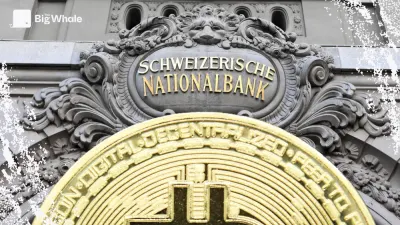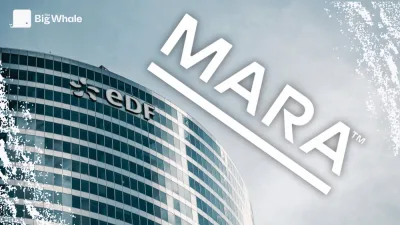TBW - Unichain: Is Ethereum under threat if its big projects launch L2s?

The relationship between Ethereum and its layers 2 is crucial, as it forms the core of the roadmap to strengthen and enhance the Ethereum ecosystem. However, this strategy has recently been the subject of criticism and doubt, particularly due to applications seeming to want to leave Ethereum or describing layers 2 as parasitic elements of the main network.
Uniswap announced in mid-2024 the launch of Unichain, its own layer 2 of Ethereum. This announcement raised concerns: could this initiative become a trend where all applications would end up leaving Ethereum for their own layer 2? However, the reality is more nuanced, as in almost all cases applications are not "migrating" - they are simply extending their product range.
Uiswap's smart contracts are immutable and cannot leave Ethereum. Furthermore, although Uniswap has already been deployed on many layer 2s for several years, 80% of its liquidity remains on Ethereum. The development of L2s therefore does not represent an abandonment of L1, but a strategic diversification aimed at improving accessibility and efficiency for different use cases.
.png)
Unichain represents an innovation that enhances Uniswap's ecosystem, adding to its existing protocol and wallet.
👉 For more information on the strategies of the DeFi giants, see our analysis on the subject.
The benefits of launching your own layer 2
A cynical, but frequently verified, interpretation is that launching a layer 2 serves primarily to artificially boost the value of its token. While this strategy may bear fruit in the short term, it is likely to prove counter-productive in the long term. Indeed, if a dedicated channel fails to offer real added value, it will quickly become an unnecessary financial burden for the project, diluting resources and credibility.
Applications that are worth launching a layer 2 must already have some scale, as maintaining a channel in addition to your application consumes more resources. You also need to be able to attract users and liquidity.
The two notable advantages of owning your own chain are being able to customise your infrastructure and internalising more of the value generated, including transaction fees and Maximum Extractable Value (MEV).
👉 For more information on MEV and its challenges, see our analysis on the subject.
In contrast to Ethereum, which aims to build an infrastructure that is as robust and neutral as possible, its layers 2 can experiment more freely and quickly, without major constraints, and develop an infrastructure that is strongly oriented towards specific use cases.
In the case of Unichain, Uniswap has collaborated with the Flashbot teams to create Rollup-Boost, an architecture that in particular minimises SRM-related losses for users while redistributing it to the applications that generate it. Unichain is therefore not an appchain dedicated to Uniswap, but rather a general-purpose layer 2 optimised for DeFi.
Layer 2s: a parasitic relationship to Ethereum?
Critics refer to layer 2s as potential "parasites", accused of hijacking Ethereum's liquidity and activity. However, Layer 2s are nothing more than blockchains interconnected to Ethereum via secure bridges when they reach full maturity. They help expand the Ethereum ecosystem, attracting new users and unlocking innovative use cases.
Until the Dencun update in March 2024, rollups had to pay high fees to publish their transaction data on Ethereum. With Dencun, Ethereum introduced blobs, a temporary storage system optimised for the needs of rollups, significantly reducing their fees.
Currently, Ethereum supports three blobs per block. For several months, these blobs remained underused, so supply exceeded demand and kept costs to a minimum. However, with the increase in rollup activity, the blobs are now systematically full, leading to a further rise in fees paid to Ethereum.
.png)
Future Ethereum updates will gradually increase the number of blobs supported by the network. This long-term strategy, based on a logic of abundance, aims to allow rollups to grow, optimise their efficiency and keep transaction costs low.
Ethereum layer 2s can opt for alternative storage solutions such as Celestia or EigenDA, which offer higher capacity at lower cost. However, this choice involves a trade-off: a reduction in security and interoperability properties with the Ethereum ecosystem.
Conclusion
Applications that deploy their own layer 2 do not leave Ethereum - the majority of liquidity remains on the main network. Instead, they are expanding their business and diversifying their services by exploiting the benefits of custom infrastructure.
In time, all successful applications will launch their own layer 2. This trend extends beyond Ethereum: even other layer 1s are seeing layer 2s emerge as applications seek more autonomy and customisation.
Beyond their contribution to the costs of the main network, layer 2s are enriching the Ethereum ecosystem and boosting the use of ETH, which remains the preferred asset on these chains for fuelling innovation and new uses. The next challenge will be to improve the user experience between Ethereum and its layers 2, in particular through applications that develop chain abstraction.
Like a single server unable to handle all Internet traffic, no blockchain can support all onchain activities. Layers 2 are therefore an elegant scaling solution, capable of evolving horizontally according to specific needs.



